
Just a few photos from THIEVES (Manz, 2002) lessons as reminders of what we need to think about when introducing this strategy to students. I taught two demo lessons with third and fourth grade students. This was the first time they’d used the strategy and it seemed to take longer than I expected, but when I thought about it – it took the amount of time it should. The students just need more opportunities to work with and think about the use of this activity in helping them make informed predictions. The good thing was that I got a boisterous thumbs up at the end of each lesson when I asked students, “Do you feel like you can make a strong, informed prediction about what you will be learning from this text?”
What follows are notes from a lesson I demonstrated.
Introduce Tier Two Vocabulary
I introduced Tier Two vocabulary at the beginning of the lesson – key tier two vocabulary that could be used to discuss what we were learning while previewing the text.
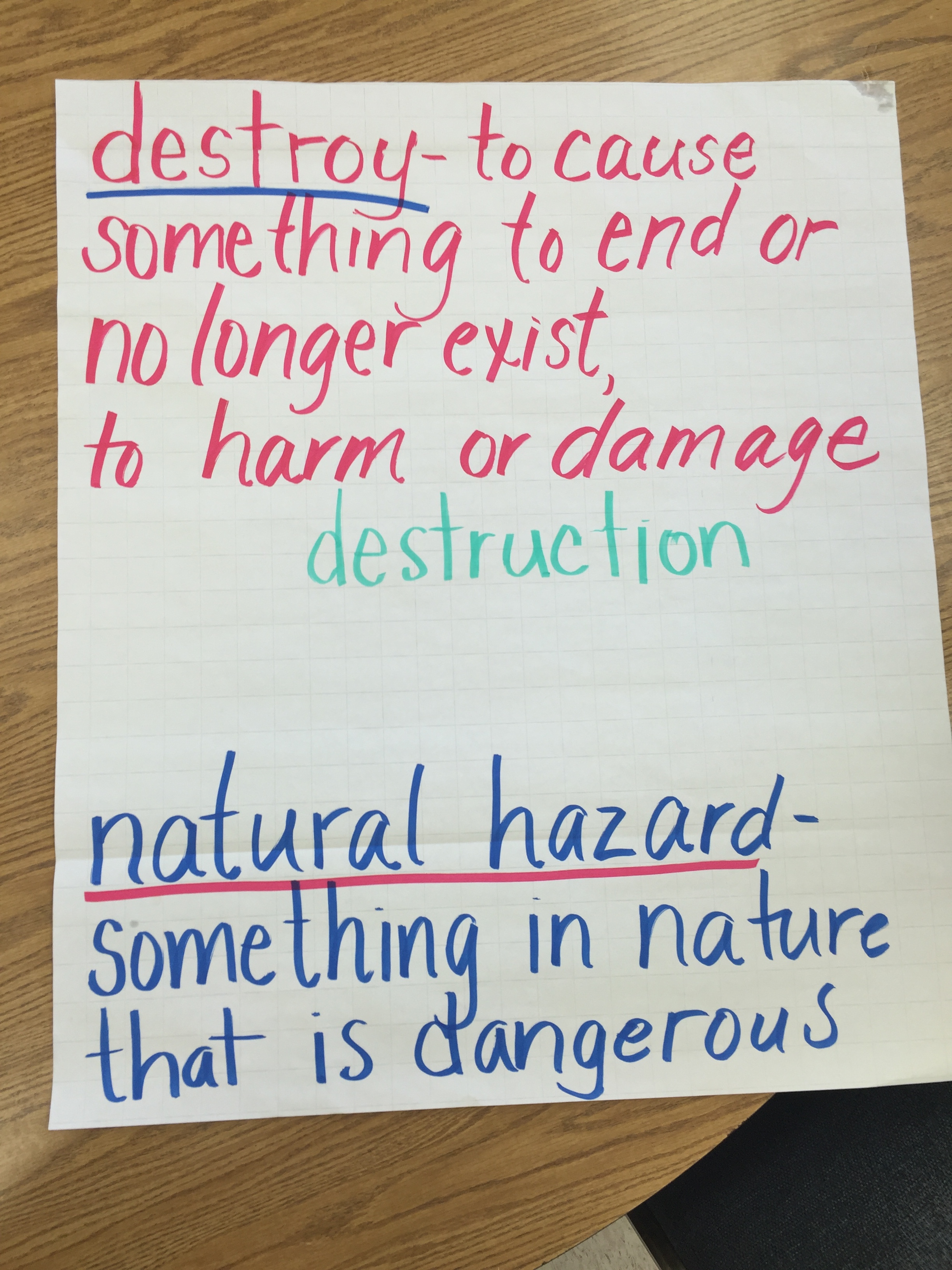
Introduce THIEVES & Model
I asked the students to quickly sketch their connection to the word “thief” and then I introduced the mnemonic THIEVES on an anchor chart. I explained by saying, “Thieves want to get ahead. They feel like they need something that they don’t have. That’s what we can do when we preview a text. We can get ahead of the author by thinking carefully about text features like the titles, the headings…” 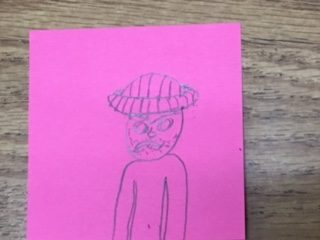
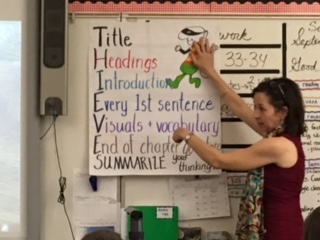
Then I modeled thinking aloud & writing notes about the title of the article the students were reading. 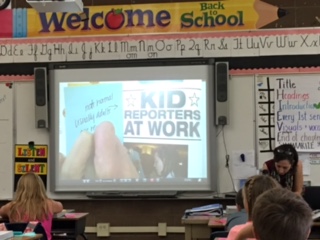
Looking back, I wish I had hammered more heavily “There has to be proof in the text feature that you are looking at to support your prediction about what you will be learning.” I also modeled making connections between text features. You can see the arrow I drew from the title to my notes about the photo in the image below.
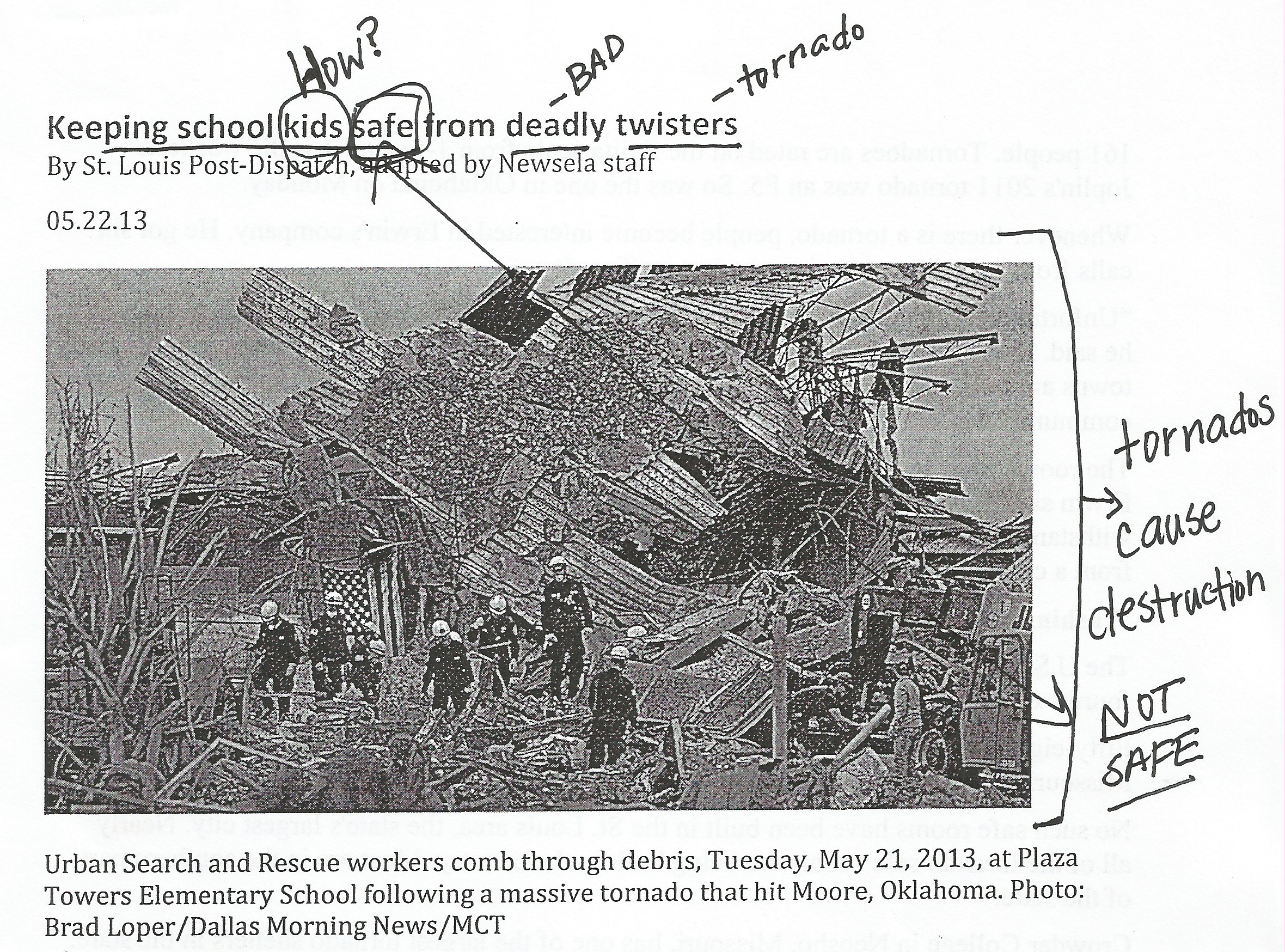
Release Responsibility to Students
I gradually released responsibility to students to use THIEVES and take notes. This was a very gradual release. As a group, they decided what text feature to look at next, I got them started on thinking about the feature, then they continued by thinking and jotting notes.
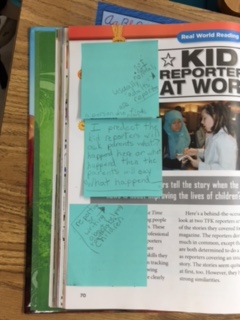
I conferred with individual students. You’ll notice in the notes above, there is a misconception about who was being interviewed by the kid reporters. I prompted the students with, “Show me the evidence in the photo that the kid is interviewing a parent?”
Guide Students in Reflecting
Using our notes, I modeled with a student partner (at the front of the classroom) how to talk about what they learned from previewing the text and what they were predicting the text would be about. I also referred to the vocabulary I’d introduced and used this in my discussion with the partner. Then I asked partners to turn and talk with each other–referring to their notes. I did this multiple times during the lesson.
I provided sentence frames to support their conversations. The sentence stems were written on the dry erase board at the front of the classroom. I predict that this text will be about… I also think that… I want to add that…
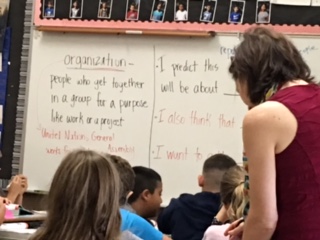
BTW – we only got to about three features during the lesson. I’m letting go of previewing a ton of features before reading. I think students can make pretty good predictions if they at least look thoughtfully at the title, headings, photos and captions.
During the next lesson, I would ask the students to review their predictions OR we’d write a strong prediction together and then I’d ask them to read the whole article. I’d follow by asking them to reread the article and mark details in the text that support their prediction. (At some point we would need to get into how sometimes we have to adjust our predictions once we start reading and learning more.) Over time, they would not need to take heavy notes when they preview a text–this could happen easily for a few minutes before we read with a different purpose or different objective in mind.
Hope this helps.
Sunday
Manz, S. L. (2002). A strategy for previewing textbooks: Teacher readers to become THIEVES. The Reading Teacher, 55(4), 434.
UPDATED JANUARY 2025
